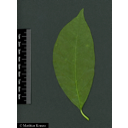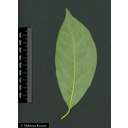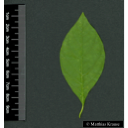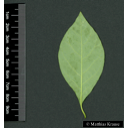Useful information about the taxon (species, subspecies, variety...)
Lindera benzoin (L.) Blume 1851
Lauraceae
- Laurel family (APG IV)Northern spicebush, Benjamin bush
Taxon concept: The Plant List (2014), version 1.1
Distribution: Canada: Ontario; United States: northeast, northeast-central, Kansas, southern States of the Great Plains, southeast, Florida
Size: 2 - 4 (m)
Flowering period: III - IV
Lindera benzoin (L.) Blume - Accepted: Lindera benzoin (L.) Blume bei Zander 2008; Familie: Lauraceae (Zander 2008)Lindera benzoin (L.) Blume - Accepted: Lindera benzoin (L.) Blume bei The Plant List (2010); Familie: Lauraceae (APG III)Lindera benzoin (L.) Blume - Accepted: Lindera benzoin (L.) Blume bei The Plant List (2014), version 1.1; Familie: Lauraceae (APG III)Lindera benzoin (L.) Blume - Accepted: Lindera benzoin (L.) Blume bei The Plant List (2010); Familie: Lauraceae (APG IV)
- Color of flower
- yellowish
- Flowers
- dioecious; flowers with aromatic scent
- Flower ecology
- insect-pollinated (entomophilous)
- Life form
- shrub
- Leaves
- thin, alternate, obovate to elliptic, 6-15 cm long
- Foliage persistence
- deciduous
- Fruits
- red drupe with one large seed
- Fruit ecology
- animal-dispersed (endozoochorous)
- Soil conditions
- preferentially on moist, rich, acidic to basic soils
- Natural occurrence (habitat)
- low woodlands, swamp margins, streamsides
- Natural propagation (all types)
- vegetative reproduction through root sprouting
- Constraints according radiation (light)
- shade tolerant
- Chemical characters
- contains essential oils
- Usage
- dried fruits can be used as a spice and leaves for tea; due to anti-arthritic, diaphoretic, and emetic properties extracts have been used medicinally and for herbal steam
- Phytopathogenic organisms
- caterpillars of the spicebush swallowtail (Papilio troilus) feed on the leaves
Enescu, C. M. et al. (2016): Corylus avellana in Europe: distribution, habitat, usage and threats. In: San-Miguel-Ayanz, J., de Rigo, D., Caudullo, G., Houston Durrant, T., Mauri, A. (Eds.), European Atlas of Forest Tree Species. Publication Office of the EU, Luxembourg.; Parolly, G. et al. (2019): Schmeil-Fitschen: Die Flora Deutschlands und angrenzender Länder.. Quelle & Meyer Verlag, Wiebelsheim, 97. Aufl.; The International Plant Names Index (2009). Published on the Internet http://www.ipni.org; Courtesy to IPNI, 2009. Exported from IPNI at date: 2009-09-22 20:17:51;
Diese Webseite verwendet Google Maps, um Karten und Standorte von Pflanzen in den Hohenheimer Gärten anzuzeigen. Dadurch werden unter Umständen Daten an Google weitergeleitet, was mit einer Verarbeitung Ihrer personenbezogenen Daten verbunden sein kann. Die Datenschutzerklärung von Google finden Sie hier: Datenschutzerklärung von Google
| Sex | Standort | Accession number | Planting year | Donation | IPEN | Lat. | Long. |
|---|---|---|---|---|---|---|---|
| Parzelle X | LG-X-047-24292 | 1998 | XX-0-HOH-LG-X-047-24292 | 48,7067611671 | 9,2148280897 | ||
| Parzelle E | SP-EB-088-17050 | 2016 | XX-0-HOH-SP-EB-088-17050 | 48,7107632096 | 9,2118558784 | ||
| Parzelle G | SP-GS-022-3772 | 2019 | XX-0-HOH-SP-GS-022-3772 | 48,7107486922 | 9,2129943282 | ||
| Gehölz | SYS-G-099-17501 | XX-0-HOH-SYS-G-099-17501 | 48,708078 | 9,211001 |




